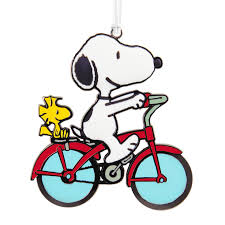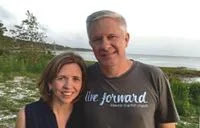Apparently, I am not the only one who perceives what I am about to describe. Moreover (How many times have I used that word on this blog?), there is empirical evidence to back it up.
In New York City, where I live, as well as other American municipalities, there are more bike lanes than at any time since, probably, the 1890s bike boom. Of course, that is not to say that you can get from anywhere to anywhere you want or need to go in a lane separated from traffic, but you can spend at least some of your cycling time secluded from large motor vehicles.
Well, at least in theory, that's possible. But there is something else that's mitigating against cyclists' safety. As more "cycling infrastructure" is being built (too often, from misconceptions about cycling and traffic), motor vehicles are getting bigger. Twenty years ago, a typical family vehicle was a Toyota Camry or some other sedan. Today, it is a sport-utility vehicle (SUV) like the Kia Ascent or pickup truck like the Ford F-150. As an infographic from Transportation Alternatives shows, that means the typical amount of "elbow room" between a cyclist and a vehicle has shrunk from 18 inches to 4 (46 to 10 cm), a reduction of about 75 percent.
The trend toward larger vehicles began and accelerated well before cities like New York started to build bike lanes. So, encounters between motor vehicles and cyclists were already getting closer. That means drivers can't use the excuse that bike lanes were "taking away" their space for driving.
On the other hand, as I've said in other posts, lines of paint does not a bike lane make. Many family vehicles* on the road today take up the entire width of a traffic lane. So, if someone is driving their Toyota 4Runner to their kid's school or soccer practice and is trying to pass another driver, or has to swerve for any other reason, there's a good chance that the SUV will veer, or even careen, into the bike lane. At least one driver has done exactly that right in front of me.
Of course, a couple of lines of paint or a "neutral" buffer strip between a bike and traffic or parking lane won't protect a cyclist--or change a motorist's behavior--in such a situation. Then again, so-called "protected" lanes don't, either: Most of the objects used to segregate lanes, like bollards or planters, are easy to knock over, especially with a multiton vehicle.
The size and weight of the vehicles presents another problem. Safety experts say that driving even a mid-sized SUV like the Buick Enclave, let alone a full-sized one like the Cadillac Escalade, is more like driving a truck than a family sedan of the 1990s. With all due respect to all of those parents who ferry their kids and aging parents, most of them don't have the driving skills of someone who operates a long-hauler.** So, Sarah or Seth driving their Honda CR-V to pick up Ian or Beth can easily misjudge the distance between them and other vehicles--or pedestrians or cyclists. Worse, the larger size and heavier weight of their vehicles means that a blow that might have struck a pedestrian or cyclist in the middle of their body and caused damage that could be serious but was probably survivable had the vehicle been a Honda Accord or Ford Escort could, instead, trap the benighted person riding along the street or crossing it underneath the grille or the vehicle itself.
So, while the effort, if not the results, to build "bicycle infrastructure" is laudable, it won't make much difference in cycling (or pedestrians') safety if typical family vehicles continue to grow in size, along with the sense of entitlement that some drivers have.
*--I'm not talking about delivery trucks and the like, which have remained more or less constant in size.
**--Although I've never driven such conveyances, I am aware of the differences in driving skills between people who drive them and the average driver: One of my uncles and a close friend, both departed, drove trucks for a living and another uncle and a cousin did so for significant parts of their working lives.



.jpg)
.jpg)


























